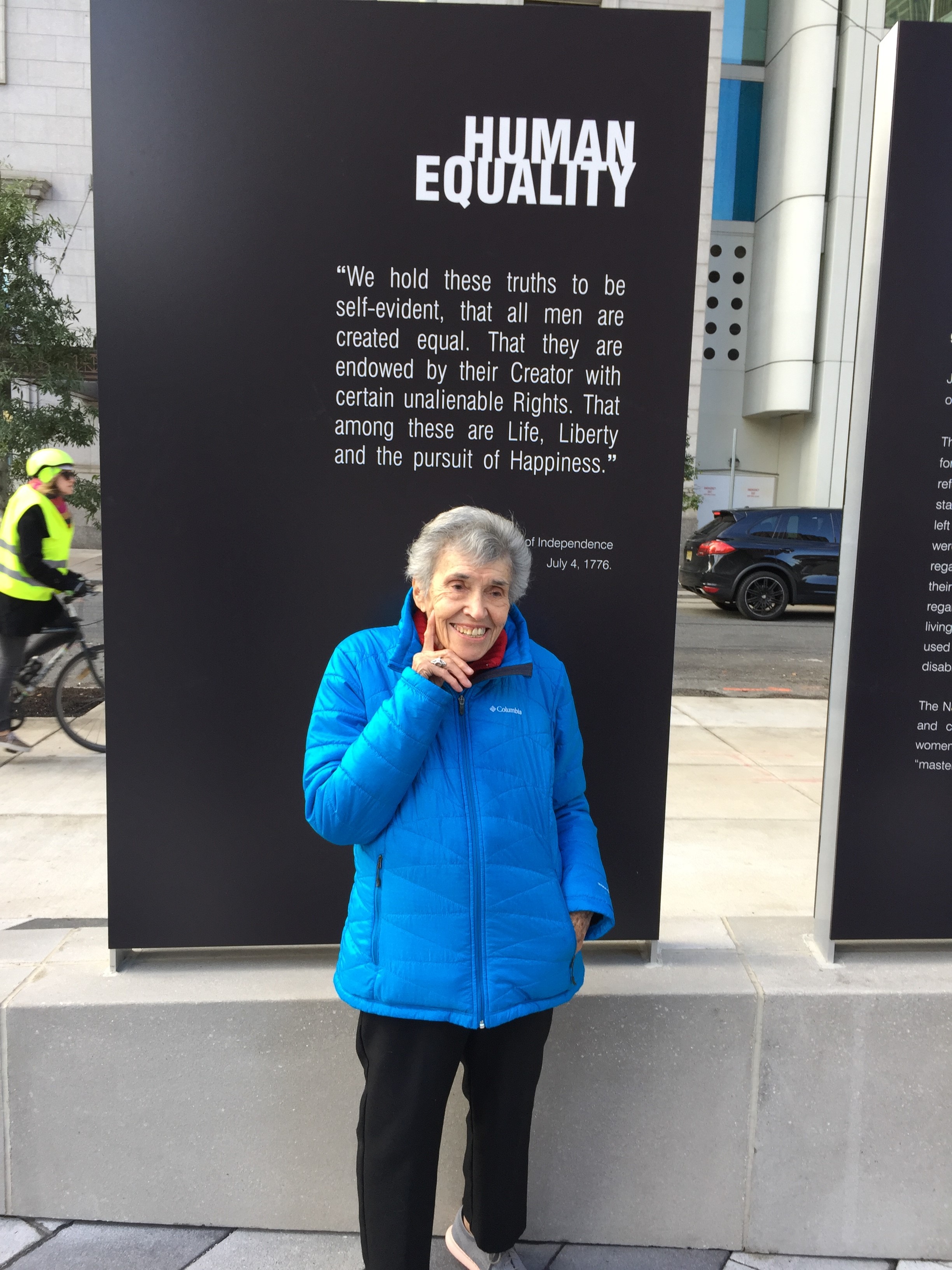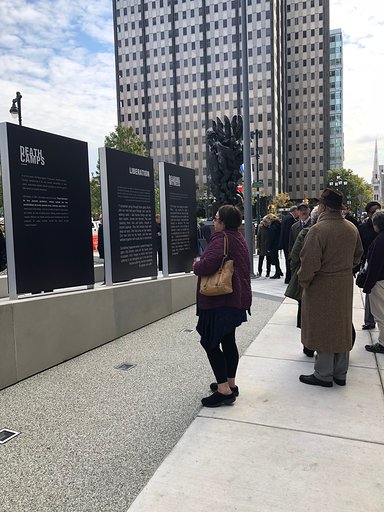Newly expanded Holocaust memorial plaza in Philadelphia features testimony via IWalk

An expanded public plaza dedicated to Holocaust remembrance opened today in Philadelphia, marking the debut of not only a set of historical and interpretive elements at the site, but also the first U.S. application of IWalk, a USC Shoah Foundation-developed mobile app that connects specific locations at the plaza with personal testimonials of Holocaust survivors and other witnesses.
The app by the Institute guides visitors as they move through the Holocaust Memorial Plaza at 16th Street and Benjamin Franklin Parkway, providing explanations about each interpretive element, as well as personal stories by survivors, maps, photos and other multimedia. Available in English and Spanish, the app provides each user with an age-appropriate, customized experience.
“Think in your minds that, not even a century after the horrific events of the Holocaust, 21 million people around the world will use, receive, see, talk about, and be educated by the content that is produced by the USC Shoah Foundation,” said Stephen Cozen, Chair of the Institute’s Board of Councilors and a Philadelphia resident, in his remarks at today's dedication ceremony. “And to me there simply is no better place to celebrate the coming together of this memorial and the work that we do than here in Philadelphia."
The IWalk takes users through the plaza’s “Six Pillars,” or plaques that memorialize the six million Jews who died in the Holocaust. Presented in pairs, the pillars contrast American constitutional protections and values with atrocities of the Holocaust – such as “Natural Rights” and “The Nuremberg Laws” – to demonstrate the belief that as long as the United States remains faithful to the Constitution, a genocide like the Holocaust will not occur here.
Users who stop by the contrasting “American Democracy” and “Totalitarianism” plaques, for instance, can watch a clip of corresponding testimony from Jewish Holocaust survivor Agnes Adachi, who remembers how speaking English was outlawed in wartime Hungary; and Suzanne Gross, another Holocaust survivor who remembers how antisemitism wasn’t prevalent in France until the war came.
“That’s when the antisemitism, you know, came in full strength,” Gross says in her testimony. “And it was done in the radio. It was done in the news, in the movies.”
 The IWalk takes users through the plaza’s “Six Pillars,” or plaques that memorialize the six million Jews who died in the Holocaust.
The IWalk takes users through the plaza’s “Six Pillars,” or plaques that memorialize the six million Jews who died in the Holocaust. Home to the Six Million Jewish Martyrs Statue – which, when erected in 1964, became the first public Holocaust memorial in North America – the expanded plaza also features several other historical and interpretive elements. These include original train tracks from the railroad to the Nazi death camps, a sapling of a tree nurtured by children in the Theresienstadt concentration camp in German-occupied Czechoslovakia who recognized that they were unlikely to live long enough to see it mature, and, at the far western portion of the plaza, a tree grove representing the woodlands that sheltered the heroes of the resistance movement.
Monday’s opening ceremony for the newly named Horwitz-Wasserman Holocaust Memorial Plaza was put on by the Philadelphia Holocaust Remembrance Foundation, a nonprofit organization dedicated to educating the public about the universal lessons of the Holocaust.
USC Shoah Foundation’s Director of Education Claudia Wiedeman and Head of Education Programs Lesly Culp were in attendance.
Like this article? Get our e-newsletter.
Be the first to learn about new articles and personal stories like the one you've just read.